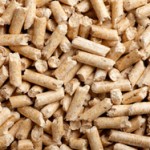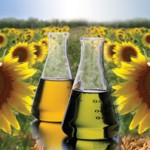
What is Biomass Energy and what is biomass made from. Simply put, biomass is any organic type material or matter that is renewable over time producing stored energy. Biomass gets its energy from the sun so all organic matter contains stored energy from the sun. Biomass is made from woody materials, agricultural crops, green wastes or any organic matter that can be used as an energy source. There are many different types of biomass materials available which can be used for heat, power, electricity, fuel, and other bio related products, biogas, biodiesel, ethanol

Ethanol based bio-fuel is now becoming the main alternative to using traditional fossil fuels based gasoline in transportation as it can be used to run cars and to power engines, either by itself or mixed with other fuels. Ethanol used as a fuel is the most common form of the range of biomass fuels and oils now available as it can be used to power engines replacing or augment gasoline as a significant source of automotive fuel. Advantages of ethanol is that being made from biomass it is biodegradable and not harmful to the environment. However, ethanol production requires large amounts of agricultural crops and land for its production

Peat pellets made from sphagnum moss has been used as a usuable source of energy for non-fuel applications especially in horticulture as a soil supplement for many years. Sphagnum biomass peat moss grows on degraded peatland and is used as an alternative to non-renewable fossil peat for horticultural applications due to its reduced greenhouse gas emissions. Sphagnum peat moss can be dried and processed in the normal way without any negative impacts on its quality as a growing medium making it ideal for processing into peat pellets. When mixed with other agricultural biomass energy crops, sphagnum moss based peat pellets produce a more compact biofuel pellet

Wood pellets made from compressed wood particles have many advantages as a fuel, they are a local, renewable, and a low-cost fuel alternative. Fuel pellets are made from woody byproducts such as sawdust, wood shavings and off-cuts but can also be mixed together with other orgainic biomass materials to improve their combustion. Using wood particles of a consistant size helps produce pellets of a uniform density. Wood pellets are made by mixing together all these different types of raw wood materials and extruding them at high pressures and temperatures using a pelletising machineproducing a pellet for burning

Biomass energy is the second most popular renewable energy source behind hydropower. Biomass when used as a fuel consists of organic matter such as agricultural wastes, wood products, sawdust and food wastes. Biomass can be burned directly for energy production or mixed and blended with coal as a fuel in electrical power plants. Biomass energy burns cleaner than coal releasing less emissions and pollutants into the atmosphere. Biomass as an energy source can also be used indirectly, producing methane gas as it decays or through a process called gasification. The global potential of biomass energy production increases daily but increased exploitation of natural areas to cultivate biomass crops threatening food supplies

Biomass energy is the description used for any kind of non-fossil fuel made using organic, biological or plant matter for use as an energy source. Today biomass technologies enable living plant matter such as agricultural crops, seeds, grasses, plants and woody materials to be converted into liquids or gases which can then be used as a clean and green energy source to produce electric power, heat or fuel without directly polluting the environment.